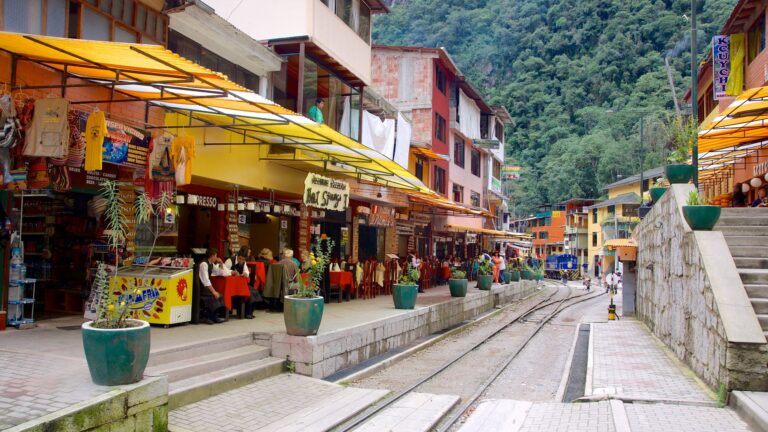Traveling to Peru can be an exciting adventure filled with stunning landscapes, rich history, and vibrant culture. However, potential travelers often ask: Is Peru safe for tourists? This article delves into the current safety landscape in Peru, providing insights into crime, health risks, transportation safety, and more, to help you make an informed decision about your trip.
Current Safety Climate
In recent years, Peru has made significant strides in improving its safety measures, especially in tourist hotspots. Cities like Lima, Cusco, and areas around the Sacred Valley are popular with travelers and generally safe, particularly in well-populated districts like Miraflores and Barranco, which are known for their vibrant atmospheres and lower crime rates. However, some areas can still be risky, particularly outside of main tourist zones or after dark.
It is crucial to remain vigilant. While violent crime against tourists is relatively low, petty crimes, including pickpocketing and scams, are common in crowded areas. As a rule of thumb, avoid showing valuables in public and always keep bags secured.
Crime and Areas to Avoid
Travelers are advised to steer clear of certain districts in Lima, such as El Agustino and San Juan de Lurigancho, known for higher crime rates. Additionally, while the Amazon rainforest and jungle areas offer breathtaking beauty, they can be less safe due to lack of infrastructure and emergency services.
Transportation Safety
Getting around in Peru presents its own set of challenges and opportunities. Here’s what to keep in mind:
- Taxis: Always use registered taxi services, preferably booked through ride-sharing apps like Uber or through your hotel. Avoid street taxis as they can be unreliable and pose safety risks.
- Public Transport: While public buses are an economical option, they can be crowded and are often targets for theft. If traveling between cities, opt for reputable bus companies like Cruz del Sur.
- Domestic Flights: For long-distance travel, flying is the safest option. Major airlines offer reliable services between popular tourist destinations.
Health Considerations
Health safety is another critical aspect of traveling to Peru. Key considerations include:
- Altitude Sickness: Cusco sits at 11,152 feet above sea level, which can cause altitude sickness for some visitors. It’s advisable to acclimatize gradually, stay hydrated, and consider taking Sorojchi pills prior to your arrival.
- Water Safety: Tap water in Peru is generally not safe to drink. Tourists should stick to bottled water to avoid waterborne illnesses.
- Vaccinations: Recommended vaccinations include Hepatitis A, Typhoid, and Yellow Fever, particularly if you plan to visit jungle areas.
Political and Social Climate
Political instability can impact travel safety. Protests, often peaceful but sometimes volatile, can disrupt travel plans, especially in urban areas. Recent events indicate that strikes targeting transportation routes, such as those to Machu Picchu, can occur. Staying updated with local news and avoiding large gatherings is advisable during your stay.
Solo Female Travel Safety
Solo female travelers can enjoy their time in Peru with adequate precautions. Here are some tips for enhancing safety:
- Avoid walking alone at night in unfamiliar areas.
- Dress modestly to blend in with local customs.
- Join guided tours for activities that take you into remote areas.
Cultural Awareness
Respecting local culture can enrich your travel experience. Learning a few basic Spanish phrases can help you communicate better and show respect to the locals. Furthermore, understanding local customs, such as dressing appropriately when visiting religious sites, can foster positive interactions.
Emergency Contacts
Familiarizing yourself with local emergency contacts is vital. Here are some key numbers to keep handy:
- Police: Dial 105 for assistance.
- Tourist Police: Call 0800 22221 for English-speaking support.
- Ambulance: For medical emergencies, dial 106.
- U.S. Embassy (for American citizens): Located in Lima, the embassy provides support for emergencies.
Travel Insurance: A Necessity
Given the potential risks associated with travel in Peru, securing travel insurance that covers medical emergencies, theft, and trip cancellations is highly recommended. This will provide peace of mind during your adventures.
Conclusion
In summary, Peru is a captivating destination with much to offer travelers. While there are safety concerns, many visitors find it a rewarding experience with the right precautions. By staying informed about your surroundings, respecting local customs, and planning your itinerary wisely, you can enjoy all the beauty and culture that Peru has to offer.
For more detailed information and real-time updates on travel safety in Peru, consult travel safety resources and local news before your journey. Safe travels!
